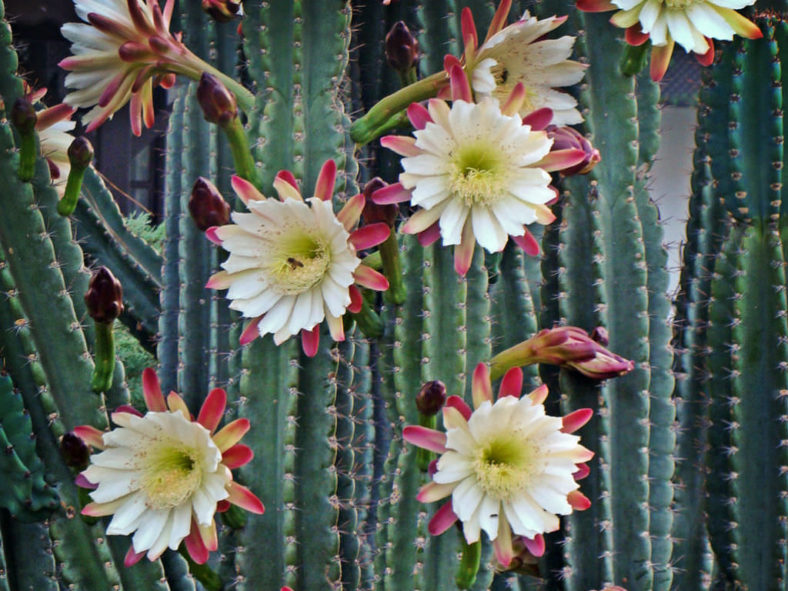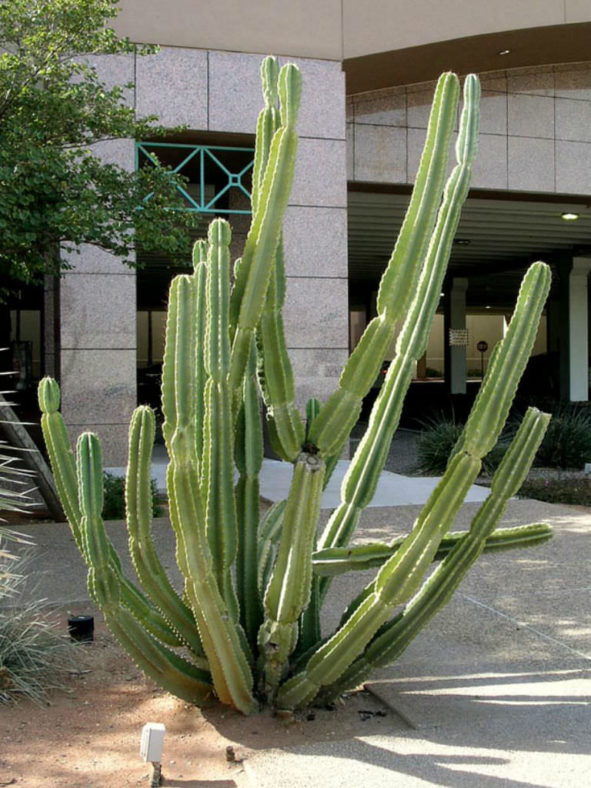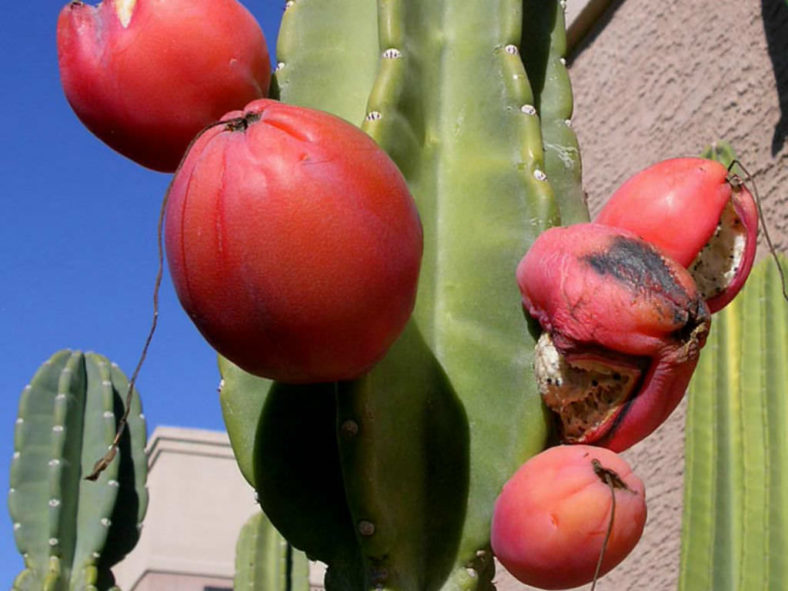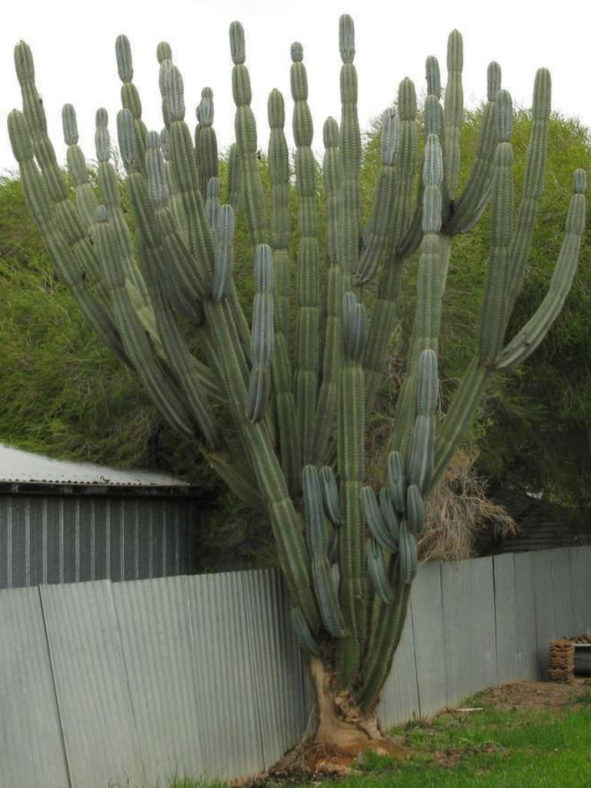Scientific Name
Cereus repandus (L.) Mill.
Common Name(s)
Apple Cactus, Hedge Cactus, Giant Club Cactus, Peruvian Apple, Peruvian Apple Cactus, Peruvian Tree Cactus
Synonym(s)
Cactus repandus, Cereus gladiger, Cereus peruvianus, Pilocereus repandus, Subpilocereus repandus
Scientific Classification
Family: Cactaceae
Subfamily: Cactoideae
Tribe: Cereeae
Genus: Cereus
Etymology
The specific epithet "repandus" (pronounced "REP-an-dus") means "turned up or back" and refers to the slightly uneven and waved ribs of the stems of this species.
Origin
Cereus repandus is native to South America.
Description
Cereus repandus, also known as Cereus peruvianus, is a large, shrubby or tree-like cactus with many columnar stems. It can grow up to 33 feet (10 m) tall, usually much-branched from the base. The stems are gray-green to blue-green, cylindrical with 8 to 13 ribs, sometimes segmented, and can reach a diameter of 8 inches (20 cm). They are usually spineless but sometimes have many gray spines that can grow up to 2 inches (5 cm) long.
The nocturnal flowers are white with reddish tips and appear from late spring to early fall. They remain open for only one night and can reach a diameter of 6 inches (15 cm). The edible fruits, known locally as Pitaya or Peruvian Apple, are spherical or egg-shaped and can grow up to 1.6 inches (4 cm) long. They are thornless and usually red, but they can also be yellow to deep violet-red.
Cereus repandus is very similar in appearance to and often confused with Cereus hildmannianus.

How to Grow and Care for Cereus repandus
Light: Cereus cacti like full sun. They can handle partial shade but thrive in direct sunlight during the summer. A sunny window is a good spot to grow a Cereus indoors.
Soil: These cacti do not like "wet feet" and must be grown in well-draining soil. Use commercial soil mixes for cacti and succulents or make your own potting mix.
Hardiness: Cereus repandus can withstand temperatures as low as 20°F to 50°F (-6.7°C to 10°C), USDA hardiness zones 9a to 11b.
Watering: From spring to fall, during the active growth period, water thoroughly, but allow the soil to dry out before watering again. With the arrival of fall, gradually reduce the watering frequency.
Fertilizing: Cereus cacti like regular fertilizing during their growing season. A balanced, water-soluble fertilizer diluted to 1/4 strength can be added to each watering. Do not feed during the winter.
Repotting: While Cereus cacti are young, it is recommended that they be repotted each year in early spring to provide fresh soil, inspect the root system, and move them to larger pots if necessary.
Propagation: Using stem cuttings is the easiest method to propagate Cereus because seed propagation is slow.
Learn more at How to Grow and Care for Cereus.
Toxicity of Cereus repandus
Cereus cacti are non-toxic to humans or animals.
Forms of Cereus repandus
Links
- Back to genus Cereus
- Succupedia: Browse succulents by Scientific Name, Common Name, Genus, Family, USDA Hardiness Zone, Origin, or cacti by Genus
Photo Gallery
Click on a photo to see a larger version.


